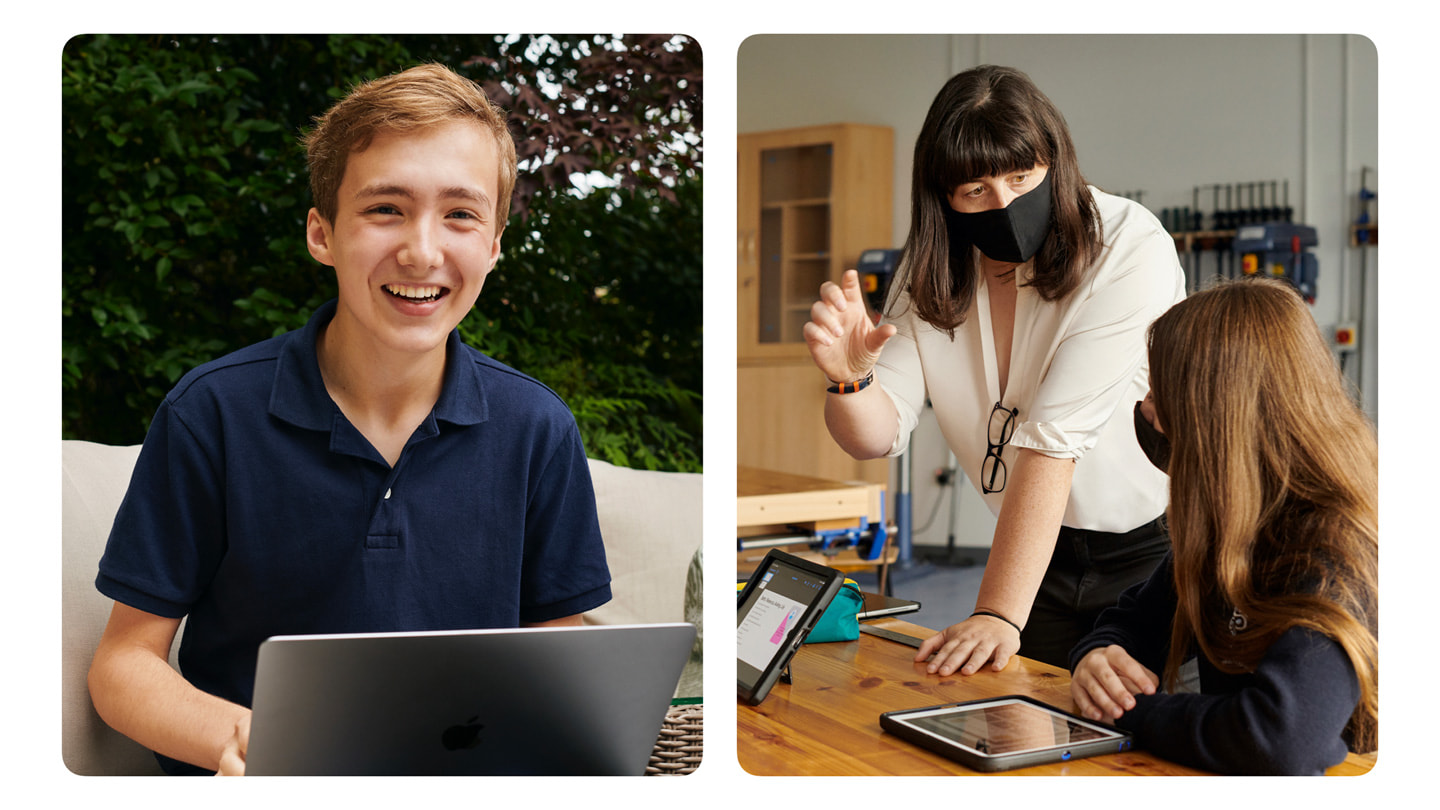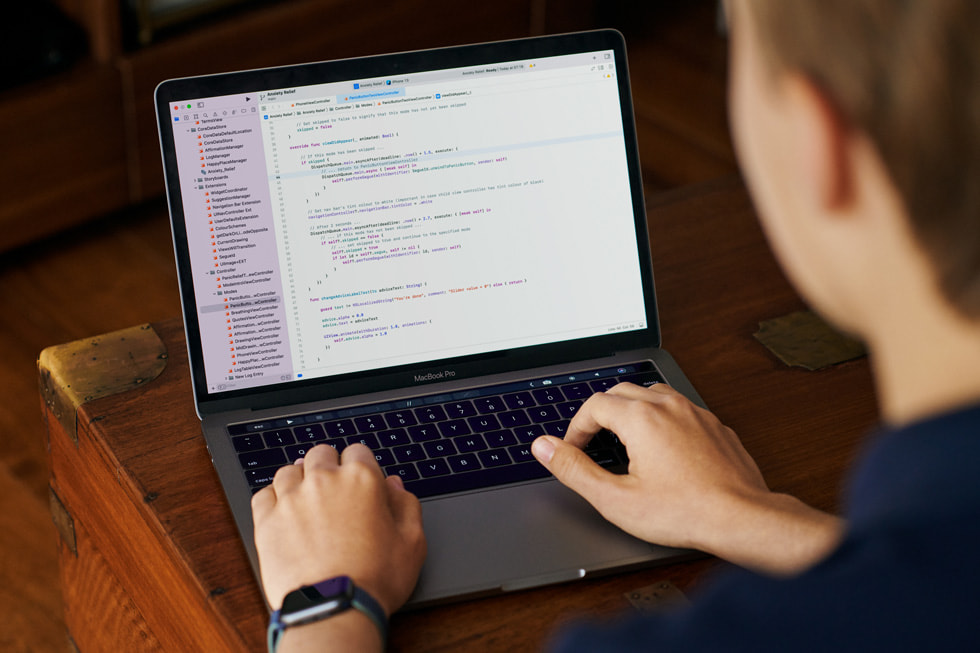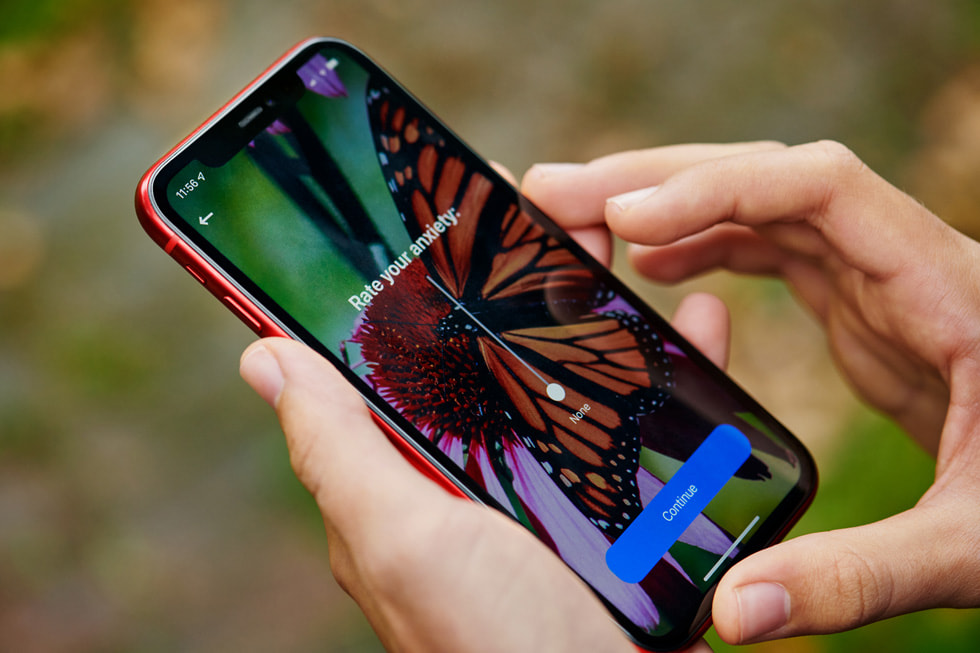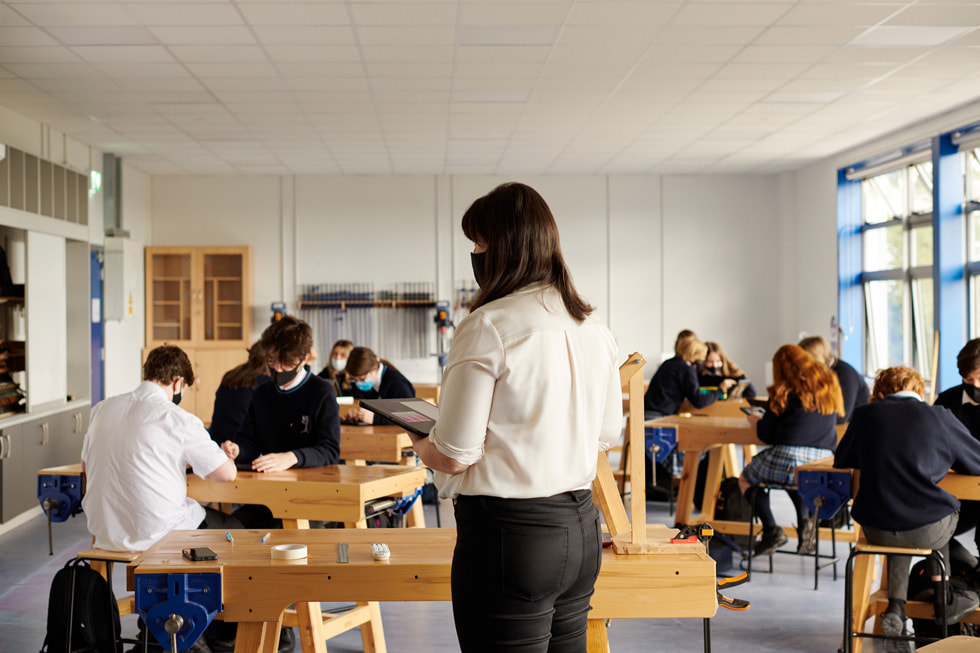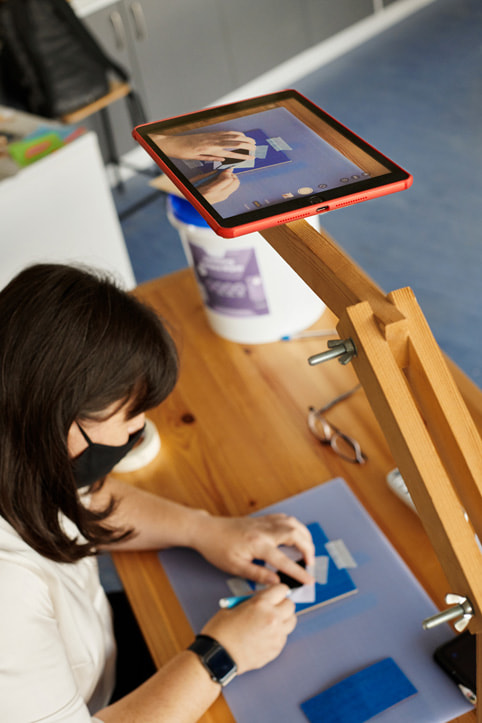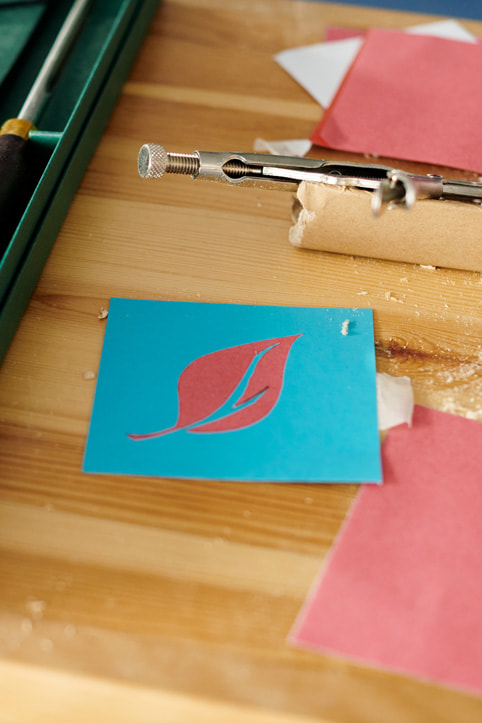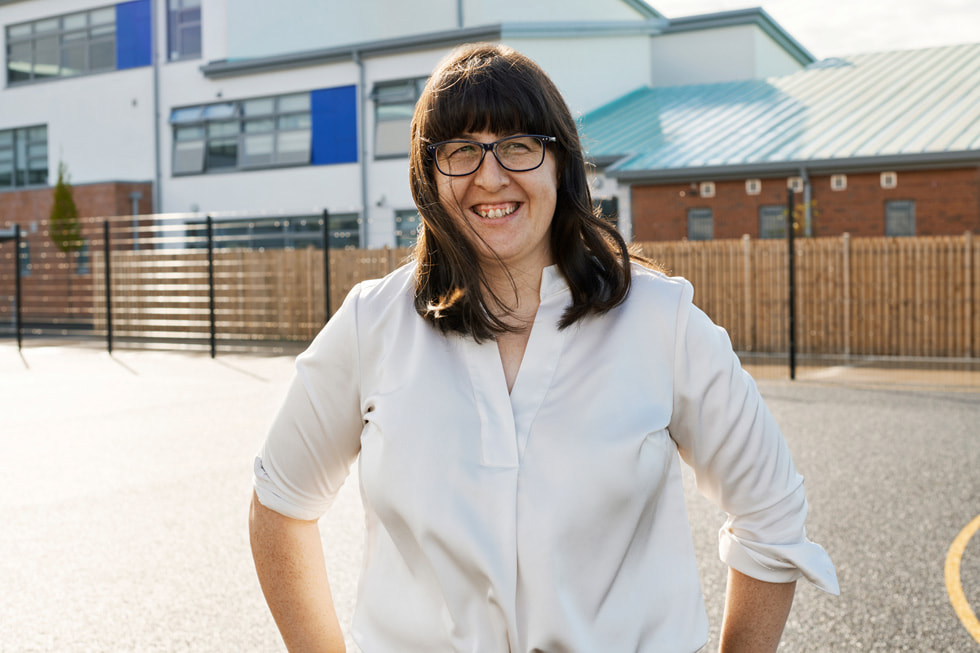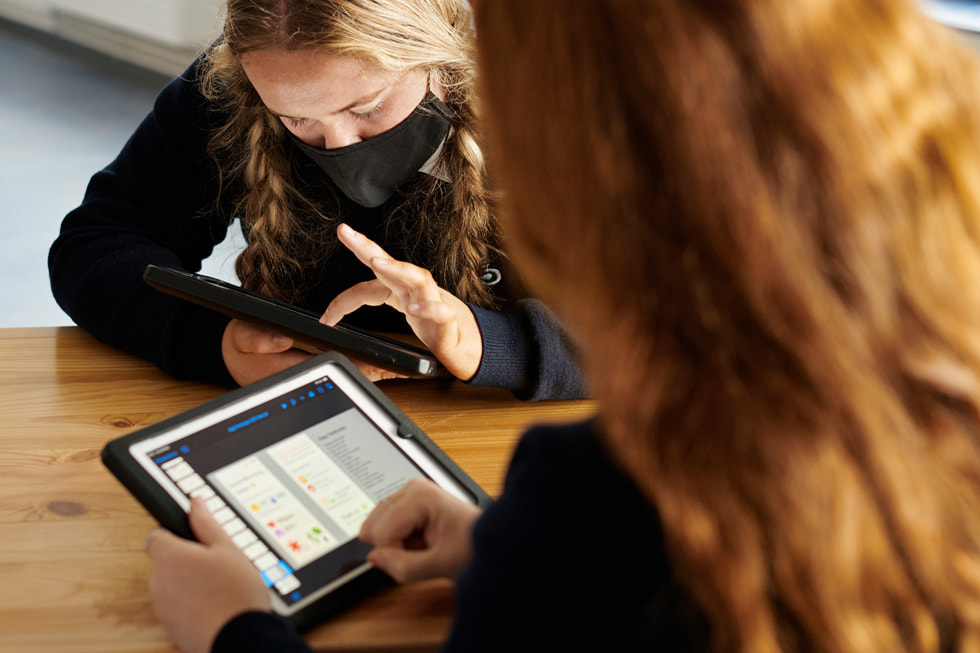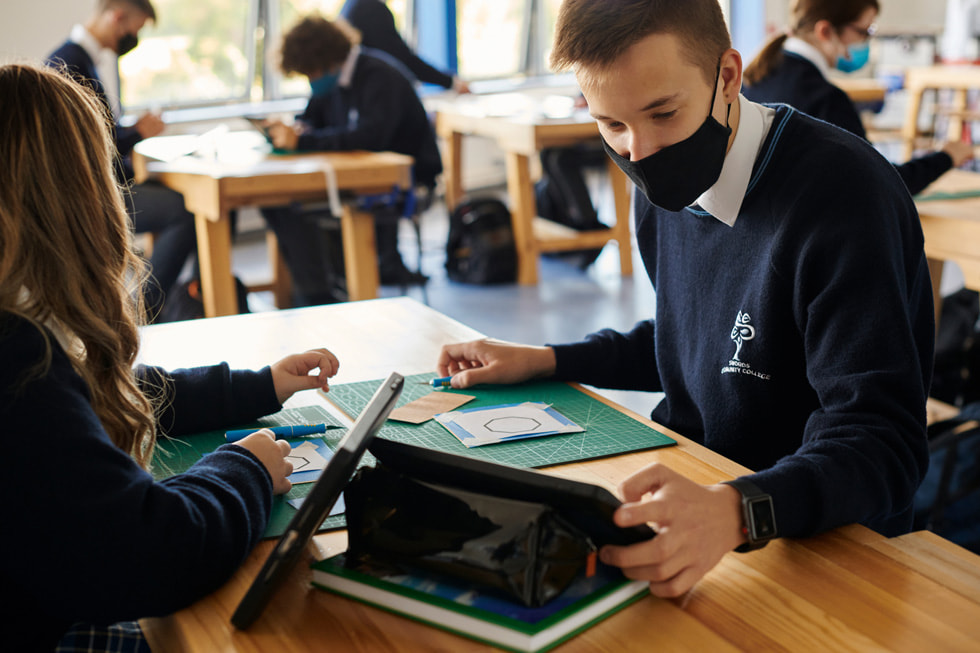FEATURE
05 October 2021
Through Apple’s Everyone Can Code,
two learners find their calling
At first glance, it might not seem that Ben Robinson, 16, and Lyndsey Balfe, 38, have much in common. They live in different countries, are a generation apart, and have never met one another.
But they are connected through a shared experience: They both taught themselves how to code, and are now using Swift and the rest of the Apple ecosystem to solve real-world problems, pursue their passions, and teach others.
Ben Robinson lives with his family in London, England. He grew up fascinated with technology, so at age 13, he taught himself how to code using Apple’s Everyone Can Code resources.
“Swift Playgrounds and then eventually Xcode were always approachable,” says Ben. “It always felt like it was doable to take that next little step that then led on to creating a full program.”
Ben also struggled with panic attacks and, as a result, changed schools a number of times. He credits learning to code with helping him focus on something other than his anxiety.
At 14, Ben released his first app on the App Store called Anxiety Relief: Find Your Calm after one of his therapists suggested he start deep breathing exercises.
“A lot of the apps I had seen at the time were either meditation-focused or weren’t free, so I just wanted to build a free tool that really helped me and helped others as well,” says Ben.
Ben’s mother, Kara, noticed an immediate difference in her son.
“I could see how calm it made him,” says Kara. “I think he found that coding was something he could use to see a path through his anxiety. Out of a really bad experience, he created something really positive that could help others too. And now coding has become his passion.”
Earlier in the pandemic, Ben launched a second app — a game that allowed his friends to play together remotely — and released updates to his first app, incorporating tools like Siri Shortcuts and widgets.
Collectively, Ben’s apps have been downloaded thousands of times, and he is currently designing his third: a running app that works in conjunction with Apple Watch.
This year, Ben was selected as a Swift Student Challenge winner as part of Apple’s annual Worldwide Developers Conference (WWDC). He has also watched WWDC videos going back years that have helped him gain insights into app creation.
“There’s such an incredible developer community around iOS development, and there are so many resources online,” says Ben. “I can always find the information I’m looking for about different frameworks — there are so many people who are thinking about the same problems you’re facing and offer their advice through articles and forums.”
As for the future, Ben hopes to build on his work as a developer and explore the fields of machine learning and artificial intelligence. He has also been asked to help run one of his school’s coding clubs this year.
“Supporting the coding club and helping others develop their enthusiasm for programming excites me,” says Ben. “My love for coding has done so much for me, and I really want others to feel the same way.”
At Swords Community College in Dublin, Ireland, teacher Lyndsey Balfe starts her fourth-year woodworking class by making sure each student has their iPad ready alongside their rulers and scalpels. The 15- and 16-year-olds are working on cutting a leaf out of wood, and today’s class is all about the process — and how coding can help inform it.
“Anyone who has done a practical subject with me before will know that when we’re doing this, we take pictures of all the different steps,” instructs Balfe, who has each student upload their pictures into Keynote. “So your instructions are your recipe. Like when we were doing coding — what we’re doing is we’re breaking it down into steps, and we’re going to follow those steps.”
Balfe sees the magic of coding everywhere, and uses its logic and structure to teach not just woodworking, but also graphic design, applied technology, and construction studies.
“I find the mind-set of coding a more thoughtful approach,” she says. “In breaking things down into steps, you’re thinking about the why. You’re thinking about the bigger picture and everything that’s involved in it. We want to develop those kinds of critical thinking skills with our students so that they’re equipped to tackle whatever challenges the future holds for them.”
From left to right: (1) The concepts of coding are incorporated into all of the subjects Lyndsey Balfe teaches, including woodworking. (2) Balfe shows students how to cut a leaf out of wood in her fourth-year woodworking class.
From top to bottom: (1) The concepts of coding are incorporated into all of the subjects Lyndsey Balfe teaches, including woodworking. (2) Balfe shows students how to cut a leaf out of wood in her fourth-year woodworking class.
Balfe knows firsthand what it’s like to learn coding because she taught herself only five years ago. She started with online tutorial videos but quickly grew frustrated.
“When I first started coding, it was very hard to find any kind of resources or to know where to go,” says Balfe. That is, until she discovered Apple’s Everyone Can Code.
“I just found when I started with Swift Playgrounds that it was easier,” says Balfe. “The activities were a lot more visual, and you’re figuring out puzzles. You also only get the number of instructions you need at the time — so it eventually gets bigger, but it never feels overwhelming.”
Around the same time, Balfe became an Apple Distinguished Educator and joined the teaching staff at Swords, leading the school’s 1:1 iPad program, which provides an iPad for each student and faculty member.
“Lyndsey has taken iPad, a suite of products like Keynote and Pages, and the principles of coding, and transformed the way we approach things,” says Aoife Smith, Swords Community College’s principal. “And that stems from the fact that she lives and loves her teaching and her students. And they love her back. But also she understands some of the difficulties that they may have, and she wants to help them through that.”
Balfe was diagnosed with dyslexia 10 years ago, and that perspective informs how she teaches. It is especially evident in her coding class, where she asks students to design an app prototype for someone living in a nursing home.
“I wanted them to consider what would happen when people with disabilities would use their apps,” says Balfe, who gave each app team a different scenario to consider. “One group had to experience their app as if they had arthritis in their fingers, and another had a visual impairment. And so we looked at the apps through different lenses.”
Balfe hopes that her classes provide a pathway for her students to find their own calling, regardless of the subject.
“My main hope is that they can find their passion — something they’re going to enjoy doing for the rest of their lives,” she says. “I love giving them as many different opportunities as I possibly can to find the thing that gives them that spark. I love teaching, so I hope they find something like that for themselves.”
Student Marcel Czubak, 15, credits Balfe, who he refers to using the Irish word for teacher, “oide,” as the catalyst for his own exploration into coding.
“I went online and I’ve done a few Swift Playgrounds, and I’ve gotten more into it,” he says. “But Oide Lyndsey gave me the strength to do it.”
In celebration of Europe Code Week, Apple has launched an Inclusive App Design challenge that can be found at apple.co/codeweek. Teachers can use the challenge to help students learn about inclusivity and accessibility via step‑by‑step instructions, supporting resources, and tips to tailor the activity for learners of all ages. Students will identify problems they care about, and then plan, prototype, and share app ideas that everyone can access and understand.
Share article
Media
-
Text of this article
-
Images of this article
